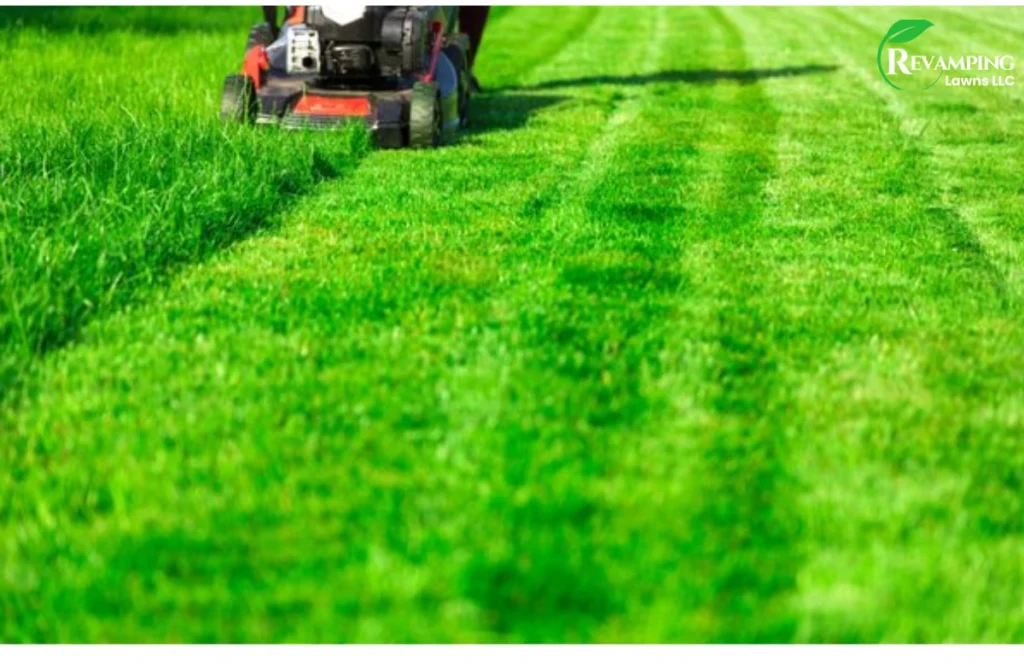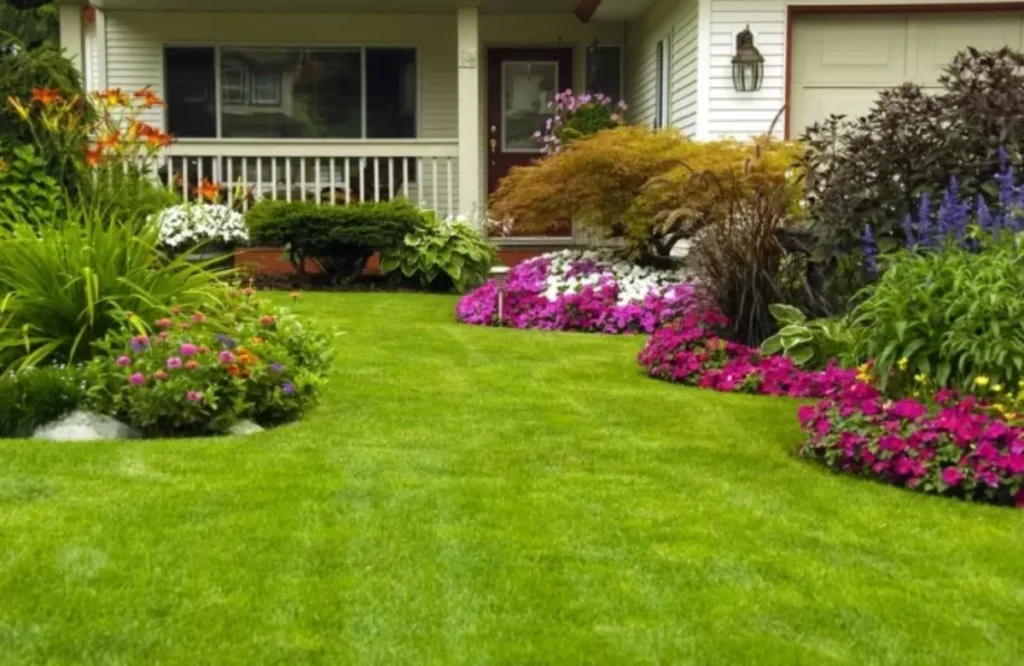When drought becomes increasingly common in many regions, the challenge of keeping a green and lively garden is still a big deal for the residents and gardeners as well. Green grass is a natural thing that demands regular watering to stay green and strong. However, if the drought period is prolonged the lawn will be stressed out, giving it brown and making it more susceptible to being attacked. Fortunately, it is possible to save water and at the same time, a deep root and a general garden green using the right and resourceful drought lawn care practices. In this blog, we will learn the necessary ways to succeed and even survive, such as the proper watering ways, soil management, and mowing adjustments.
What Defines a Drought?
A drought is typically characterized as a long period when the precipitation is much lower than normal, leading to a shortage of water supply. It is a natural event that is usually recognized by a huge difference between what is available and what is needed in terms of water and in most cases, it causes the death of crops, the disruption of ecosystems, and deprives humans of the use of water. The extent of damage and the effect of drought may differ according to different climate patterns of regions, hence the necessity of considering local context as a pivotal factor in understanding drought conditions.
Signs Your Lawn Is Suffering from Drought
Identifying drought symptoms in your lawn at an early stage can save the lawn from lasting injuries and support its vigor during arid times. Indicators mentioned here include:
- Discoloration
- Blade Curling and Wilting
- Thinning and Patchiness
- Slow or No Growth
- Weed Invasion
- Dry, Crunchy Texture
- Lingering Footprints
- Cracked Soil

Choosing the Right Grass Types for Dry Conditions
The first step to a healthy lawn during a drought is to find out the right grass that will suit the conditions. Some grasses are more drought-resistant by nature due to their root system, growth patterns, and water conservation abilities.
| Grass Type | Season | Best For |
| Bermudagrass | Warm-season | Warm, sunny areas |
| Buffalograss | Warm-season | Arid and semi-arid climates |
| Bahiagrass | Warm-season | Sandy, drought-prone soils |
| Tall Fescue | Cool-season | Transition zones, cooler climates |
| Sheep Fescue | Cool-season | Rocky, dry soils |
Warm-season grasses like Bermuda grass, Buffalograss, and Bahiagrass, among others, are great for dry areas. Extensive, creeping, and fibrous root systems of Bermudagrass empower the grass to revive rapidly from drought, hence it is the perfect choice for a sunny and warm area. Buffalograss easily adapts to drought situations and it is very affordable to maintain. Bahiagrass is mainly known for its vast root system and ability to grow on harsh, sandy soil without the need of much water and fertilizer.
Additionally, tall fescue and sheep fescue are two types of cool-season grasses that have good drought resistance abilities, especially in transition zones or cooler climates. Deep roots of tall fescue help the grass to stay green longer by accessing water that is far below the surface. Sheep Fescue is a low-maintenance grass that grows well in rocky, dry soil with minimal water.
Homeowners can save a lot of water by choosing drought-resistant grasses suited for dry conditions and local climate zones, which will also give them a more robust and beautiful lawn.
Top Ways to Decrease Lawn Damage from a Drought
By following these measures, you will save water, maintain the health of your grass, and have a lawn that remains green and strong even during dry periods. These methods, from watering and mowing to soil and fertilization, are simply the right way to go in drought lawn care.
Watering Strategies for Drought-Prone Lawns
Efficient water use is a must if we want to save water and keep the lawn in good condition during a drought.
- Water the lawn deeply once every week using ½ to ¾ inches of water.
- Water during dawn when there is minimum evaporation and let the grass breathe.
- Install water-smart systems like drip irrigation to direct the water to the roots and minimize wastage.
- Keep a lookout for drought stress signs and modify the watering accordingly to avoid runoff or overwatering.
Mowing Techniques to Preserve Moisture
One with proper mowing will see their lawn keep the needed moisture and ultimately will have a water resistance against drought.
- Increase mower blade height to 3-4 inches so that the ground is shaded and there is less evaporation of water.
- Incorporate the grass clippings as a moisture-retaining mulch and as a source of nutrients.
- Do not mow the grass during the hottest part of the day or when the lawn is under drought stress to avoid damage.
- Make sure that mower blades are always sharp so that the lawn gets cut cleanly and the stress on it is minimized.
- Mow less frequently, which will allow the grass to become longer and, at the same time, hold more moisture.
Soil and Mulching Practices to Retain Moisture
Soil that is rich in nutrients is the key to water saving during dry periods.
- Aerate your lawn annually to minimize the compaction of the soil and increase the absorption of water.
- Cover the soil with 2-3 inches of organic mulch (wood chips, straw) around lawn beds.
- Mulch stops the water loss from the soil, provides the right temperature for the soil, and facilitates easy removal of the weeds.
- As mulch decomposes, it gradually releases nutrients for the drought-resistant lawn.
Fertilization and Weed Control During Drought
- Limit both the amount and the number of times you use fertilizer with the purpose of not stressing the lawn that has been affected by drought.
- Use slow-release or organic fertilizers so that nutrients are maintained without giving off a high growth rate.
- Prevent weeds from becoming established, as they will take over the already limited water to the grass.
- To reduce the use of herbicides and the stress to your lawn, only a few weeds can be pulled by hand and the rest can be treated with spot application.
- Correct fertilization and suitable weed control make lawns stronger and thus drought-resistant.

Final Tips and Sustainable Lawn Care Habits
- Choose grass varieties that are resistant to drought and fit your climate to conserve water better.
- Water your lawn deeply and infrequently so that the roots grow stronger and deeper.
- Apply mulch and organic soil amendments to keep the moisture in the soil and improve the quality of the soil.
- Increase the height of mower blades and decrease the frequency of mowing to keep the moisture in the soil.
- Decrease the use of fertilizers during the drought, and give preference to slow-release or organic fertilizers.
- Take care of weeds immediately so that they don’t compete with your plants for water.
- Use moisture sensors or timers to monitor water use efficiently and avoid wasting water.
- Use organic and eco-friendly lawn care practices to make your lawn sustainable in the long run.
- Consistently aerate the soil around the roots to reduce compaction and increase water absorption.
- Use integrated pest management to reduce the use of chemicals and protect biodiversity.
By adopting these sustainable habits, you develop a resilient lawn that thrives with less water, lowers environmental impact, and is able to deal with drought challenges efficiently.
Conclusion
Keeping the lawn green and vibrant in dry spells through drought that lasts for a long time, lawns will need to be managed through smart care strategies focusing on water conservation, proper mowing, soil health, and balanced fertilization. Lawns can remain green and resilient during droughts by selecting the correct grass species and employing sustainable watering and maintenance practices. In the case of drought, for custom-tailored suggestions and competent solutions to flourish your lawn, consider the Revamping Lawn LLC service.
FAQs
Deep water it once a week, and the water should be from about ½ to ¾ inch.
Bermudagrass, Buffalograss, Bahiagrass, Tall Fescue, and Sheep Fescue are typical drought-tolerant grasses.
Certainly, but make sure you lift your mower blades to 3-4 inches and cut less often to maintain the moisture.
Slow-release or organic fertilizers should be used sparingly to avoid stressing the lawn with rapid growth.
Mulch lessens evaporation, keeps the soil at a stable temperature, prevents the growth of weeds, and slowly feeds the soil.



